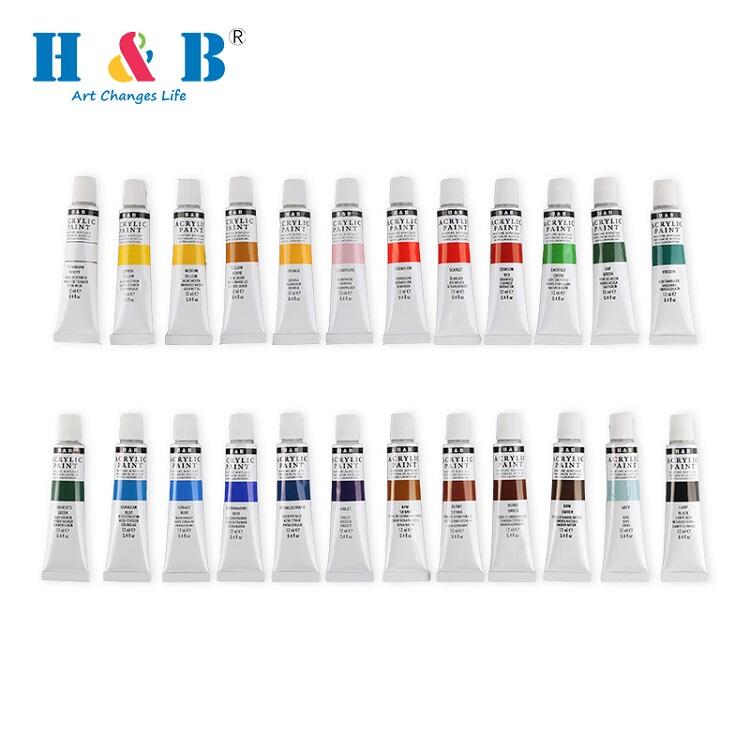Essential Brush Selection Guide for Acrylic Artists
Selecting the right paint brush for acrylic painting can dramatically influence your artistic expression and the final outcome of your work. Whether you're a beginner exploring the world of acrylics or an experienced artist seeking to expand your toolkit, understanding brush characteristics is crucial for achieving desired effects. The perfect paint brush for acrylic painting becomes an extension of your creative vision, allowing you to translate your imagination onto canvas with precision and flair.
Understanding Paint Brush Materials
Synthetic vs Natural Bristles
When choosing a paint brush for acrylic painting, the bristle material plays a vital role in performance. Synthetic bristles, typically made from nylon or polyester, offer excellent durability and spring back to their original shape easily. They're particularly well-suited for acrylic paints because they resist the harsh nature of acrylics and maintain their form even with repeated use. These bristles are also easier to clean and tend to be more affordable than natural alternatives.
Natural bristles, traditionally sourced from animal hair like sable or hog, provide exceptional paint holding capacity and create beautiful blending effects. However, they may not be the optimal choice for acrylic painting as they can become damaged more easily by the chemical composition of acrylic paints. Natural bristles work best with oil paints, where their ability to hold and distribute paint smoothly really shines.
Brush Handle Considerations
The handle of your paint brush for acrylic painting affects both comfort and control. Long handles are ideal for easel work, allowing you to step back and maintain perspective while painting. Short handles offer better control for detailed work and are preferred for smaller canvases or when working at a table. Look for handles made from quality wood that feels balanced in your hand and provides a comfortable grip during extended painting sessions.

Brush Shapes and Their Applications
Round Brushes
Round brushes are perhaps the most versatile choice for acrylic painting. Their pointed tips excel at creating fine lines and details, while their fuller bellies hold enough paint for broader strokes. When selecting a round paint brush for acrylic painting, consider the size carefully - smaller rounds (size 0-4) are perfect for detail work, while larger ones (size 6-12) work well for filling in areas and creating varied stroke effects.
Flat and Bright Brushes
Flat brushes feature straight edges and are essential for creating bold, uniform strokes. They excel at covering large areas efficiently and creating sharp edges when needed. Bright brushes are similar to flats but have shorter bristles, offering more control and stiffness. Both types are invaluable when you need to apply solid colors or create geometric shapes in your acrylic paintings.
Brush Size Selection Strategies
Canvas Size Correlation
Your canvas size should directly influence your brush selection. Larger canvases typically require bigger brushes for efficient coverage and effective technique execution. A good rule of thumb is to start with a paint brush for acrylic painting that's proportional to your working surface - larger brushes (sizes 12-20) for backgrounds and broad areas, medium brushes (sizes 6-10) for general work, and smaller brushes (sizes 0-4) for details and finishing touches.
Detail Level Requirements
Consider the level of detail in your intended artwork. Fine detailed work demands smaller brushes with precise tips, while more expressive or abstract styles might benefit from larger brushes that create bold statements. Having a range of sizes allows you to move seamlessly between different techniques and effects within the same piece.
Brush Care and Maintenance
Cleaning Procedures
Proper cleaning is crucial for extending the life of your paint brush for acrylic painting. Clean brushes immediately after use with warm water and mild soap, shaping the bristles gently with your fingers. Avoid leaving brushes standing in water or resting on their bristles, as this can permanently deform them. Store brushes horizontally or vertically with bristles pointing up to maintain their shape.
Storage Solutions
Invest in proper storage solutions to protect your brushes. Brush rolls or cases prevent bristles from being crushed and keep your tools organized. Consider using brush shapers or holders during drying to maintain the optimal bristle formation. Proper storage significantly extends the lifespan of your paint brushes and ensures consistent performance in your acrylic painting practice.
Investment Considerations
Quality vs. Budget
While it's tempting to opt for cheaper brushes, investing in quality tools often proves more economical in the long run. High-quality paint brushes for acrylic painting maintain their shape better, hold more paint, and last longer than their budget counterparts. Consider starting with a few excellent brushes rather than many inferior ones, gradually building your collection as you develop your style and techniques.
Building a Brush Collection
Start with essential shapes and sizes, then expand your collection based on your specific needs. A basic set might include a large flat brush for backgrounds, a medium round for general work, and a small detail brush for fine lines. As you progress, add specialized brushes that complement your artistic style and preferred techniques.
Frequently Asked Questions
How often should I replace my acrylic paint brushes?
With proper care and maintenance, quality acrylic paint brushes can last several years. Replace brushes when they show signs of permanent bristle splaying, loss of shape retention, or significant wear at the ferrule connection.
Can I use water-color brushes for acrylic painting?
While watercolor brushes can be used for acrylics, they're typically more delicate and may wear out faster. It's better to use brushes specifically designed for acrylic paints to ensure longevity and optimal performance.
What's the best way to store acrylic paint brushes?
Store clean, dry brushes either horizontally or vertically with bristles pointing upward. Avoid storing them bristle-down or in containers where they might be compressed. Using brush guards or shapers during storage helps maintain bristle shape and extend brush life.


